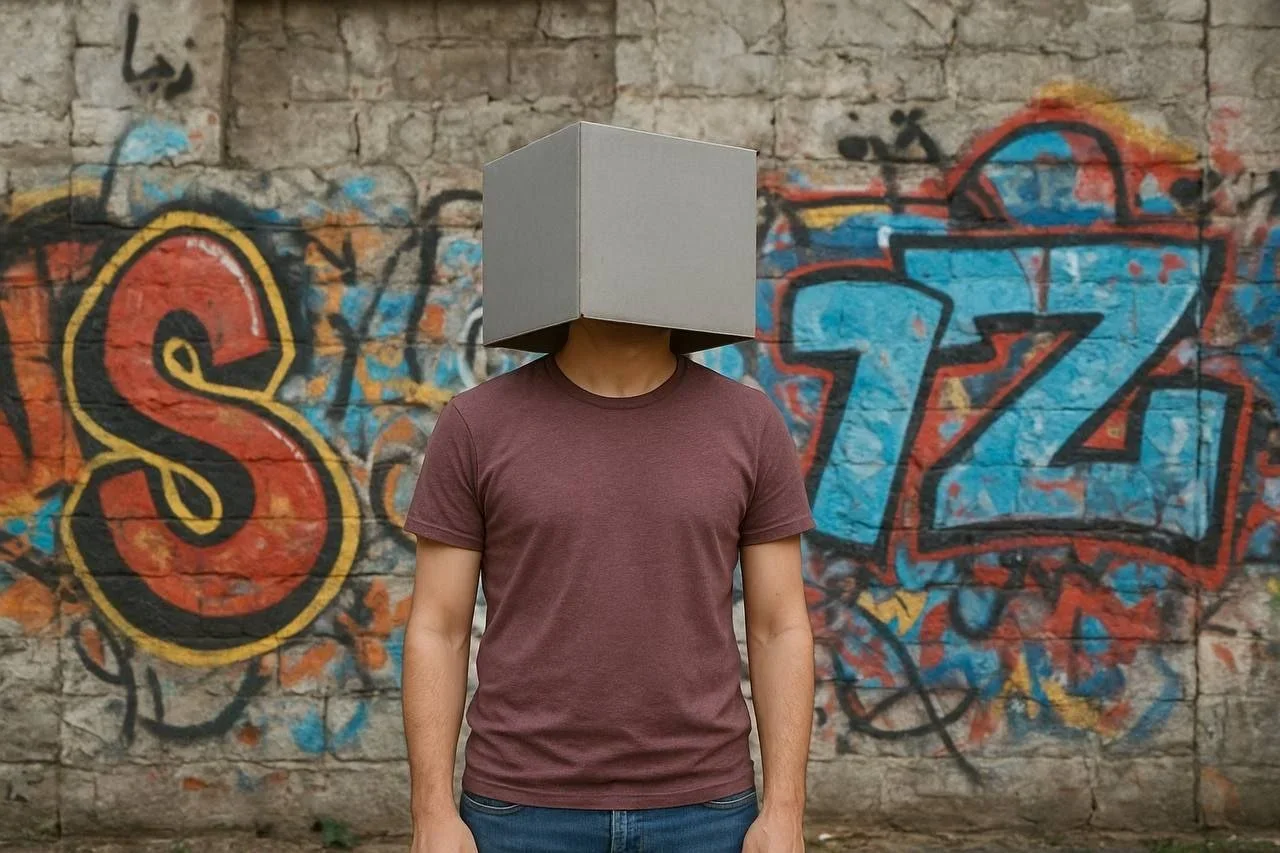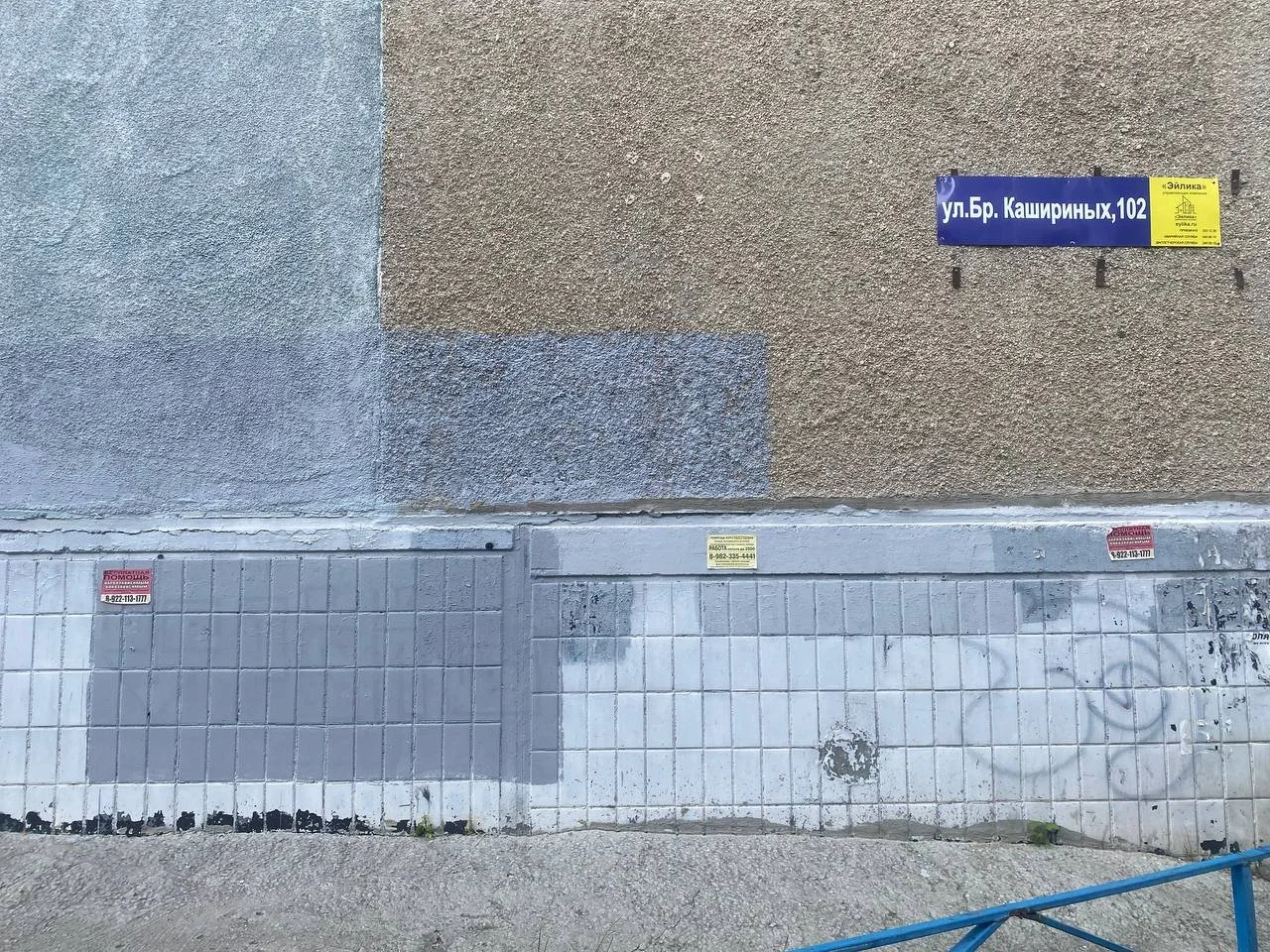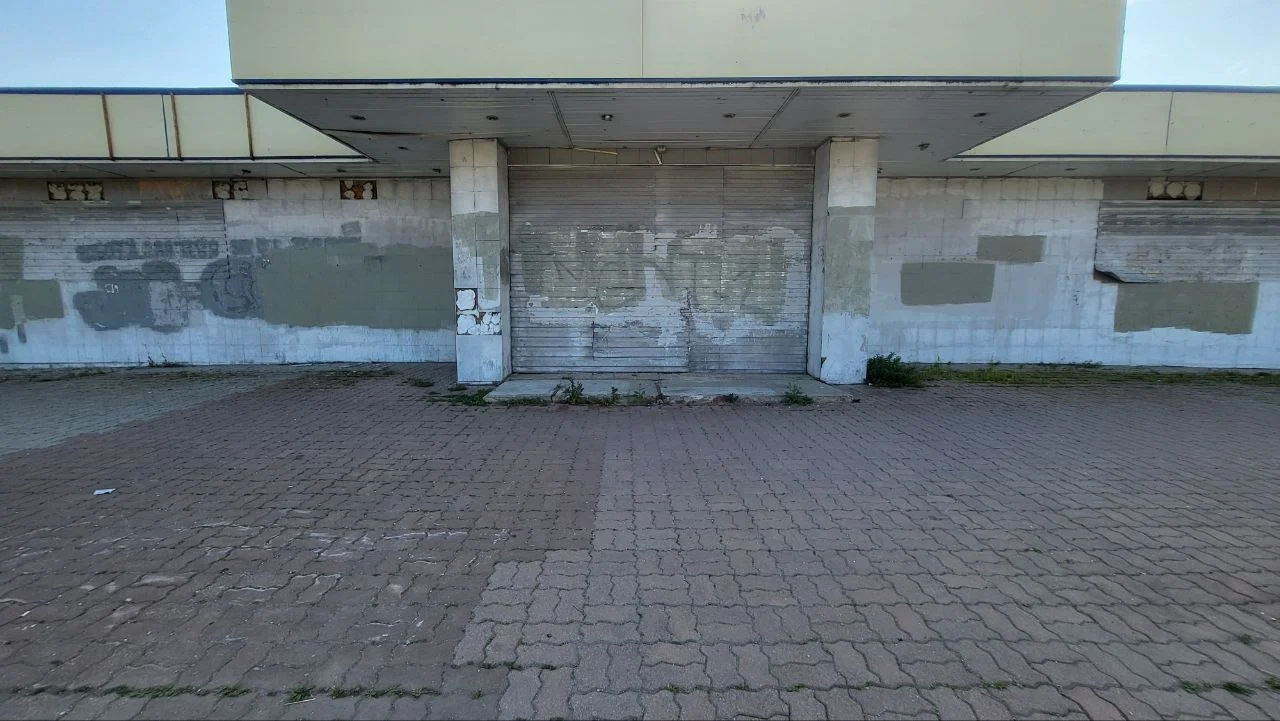10 Questions with Kondraty Seriy (Grey)
Kondraty Seriy (Grey) (born 2000, Moscow) is a contemporary interdisciplinary and street artist. The central element of his practice is the colour grey, understood not as the absence of colour, but as the space where black and white meet, struggle, merge and interact.
Graphite, like a prehistoric forest frozen under pressure, becomes for the artist a symbol of compressed time and material, in which nature and history are combined. For him, the colour grey is not only a philosophical category, but also a metaphor for contemporary reality, where there is no single hierarchy: black and white, depth and height, chaos and structure exist simultaneously.
Kondraty studied at leading institutions in Moscow, including the Stroganov Academy, Free Workshops, BAZA, IPSI, and HSE. His works are included in the collections of the Garage Museum of Contemporary Art, the State Russian Museum, and the National Centre for Contemporary Arts, and have been featured in a number of major exhibitions. Today, Kondraty Grey continues to develop his practice, combining artistic research with active participation in public and cultural life.
Kondraty Seriy (Grey) - Portrait
Manifesto
1. Screaming Grey
2. Yves Klein made a mistake. He chose ultramarine. It's not bad, but it smacks of charlatanism, not art.
3. I despise artists who fail to comprehend nuance, gradients, refined and subtle moves, plastic solutions, and the supremacy of grey over all other colours.
4. A chinchilla is my spirit animal.
5. Capitalists use colours to label their goods; that's how they hope to differentiate their products from others.
6. Nations use colours for their flags, with which they mark their territories and spheres of interest.
7. To see the true picture of the world, one must convert it to greyscale.
8. Those who neglect grey underestimate reason and prioritize emotions above all else.
9. Behold the grey rainbow – it is a spectrum purified of emotions. It is the organic fusion of the natural with the rational.
10. Attention! A solemn moment. The grey flag is raised above the planet.
11. «Do you not agree, Monsieur Pechorin, that a grey overcoat suits Monsieur Grushnitsky far better?..» (p. 110, A Hero of Our Time, M. Y. Lermontov)
12. We must conduct regular audits of grey in Moscow and other Russian cities to ensure that municipal services responsible for painting building facades, walls, and fences do not deviate from grey and descend into colouristic debauchery.
13. If all artists painted in shades of grey, there would be no distinctions between them. But just you try it, and you will understand that the universe of grey accepts everyone and everything, wholly and completely.
14. A grey square is far more powerful than a black one, if only because it is more intelligent.
15. See the world through a dog's eyes.
16. A rat cornered in a room of grey.
17. Red, orange, yellow, green, cyan, blue, violet create discord and emotional swings. Convert all these colours to grey – and you will discover harmony.
18. Grey does not bring war, but eternal peace.
19. Color itself is a result of our perception and the tricks light plays on the surfaces of different materials. In truth, the objects of the world have no color except for grey.
20. Look at the world through the eyes of the Creator — and you will be able to penetrate the essence of things. Grey will be your guide on this path.
21. "Grey everyday life," "drabness," etc. — these phrases are invented by simple-minded people who live by passions and emotions. An intelligent person is never bored, and for them, grey has so many shades that playing with them, they forget about everything else.
22. Grey has no alternative, for it is the alpha and the omega.
23. Swaddle an infant in grey, let the bride wear a grey wedding dress, bury the departed in a grey coffin.
24. Grey food is the healthiest.
25. The Grey Cardinal is the true cardinal.
26. Grey reliably conceals any color.
27. The primary metal of grey is silver. Do you know the chime of a silver bell?
28. All the most beautiful animals on the planet are grey.
29. A person in grey projects restraint, trustworthiness, and businesslike efficiency.
30. Gather all the digits and numbers of the world — and you will get a grey space.
31. Wisdom is contained solely in the color grey.
32. Black and white are radical cases of grey.
33. Grey has an infinite number of shades. When we limit them, as in the title of the film 50 Shades of Grey, we do so out of a limited consciousness. We must fight these limitations and develop our consciousness towards the inner infinity of the cosmos.
34. Grey matter and a sense of grey are directly connected.
35. Grey has many children but few parents.
36. A black hole is actually grey.
37. The leaves of trees, bushes, and grasses are green only because of chlorophyll, which colors the grey spaces inside the leaf.
38. Blood would have a light grey color if it weren't for the red blood cells.
39. Every now and then, you come across an absolutely grey piece of fresh meat at the butcher's market.
40. Grey is balance, tranquility, reason, a calm and mighty force capable of encompassing all that exists.
41. Grey with an exclamation mark!
42. May the grey colour help you!
43. All colours worship the grey colour, but grey worships no one.
44. The rejection of all colours except grey is not a impoverishment of the palette, no, it is a retreat into depth and a reliance on pre-established values.
45. A concrete foundation is grey.
46. Ode to Concrete.
47. Concrete it!
48. Plaster is good when it is grey.
49. Ten liters of grey oil paint — is there anything else that needs explaining?
50. The grey colour has only one flaw, but I can't remember what it is.
51. Little grey clouds.
52. The grey colour is defenseless against other colours. We must pass laws to protect the grey colour and establish its priority over others. Otherwise, there won't be enough paint to cover what these street artists scribble.
53. However, in the past, I often took to the streets myself. My first profession was a street artist. I've traveled all over Russia. My works can still be found in Moscow, St. Petersburg, Nizhny Novgorod, Yekaterinburg, Novosibirsk, Samara, Kazan, Krasnodar, Voronezh, and other cities. I also have works abroad on the streets of cities like London, Paris, the Czech Republic, and others.
54. My method involves matching the paint to the color of the facade so precisely that it becomes impossible to distinguish. Sometimes I don't even match the paint myself; instead, I negotiate with the district administration to provide me with a few cans of paint for my street experiments. In that case, the color and tone match perfectly, and I achieve an incredibly powerful effect on a nano-level, as I am not interested in a superficial attitude towards art. Decorative art does not attract me. No, I do not reject it. An artist can do anything they wish or are capable of. Not everyone has the same mental capacities, after all. I have only one grievance for all artists: what is the point of this motley, chaotic mess?
Grey 1928 © Kondraty Seriy (Grey)
INTERVIEW
Your choice of anonymity seems deliberate. What role does your name, Kondraty Grey, play in defining or concealing your identity, and how does it reflect your artistic philosophy?
Some people consider art to be something vague and indeterminate. This is probably due to their childhood experiences with watercolour studies. In reality, art is the most precise discipline I know. Mathematics, for example, is merely a particular case of art. That’s why what I value most in art is precision. I also enjoy watching fencing matches - those masters can strike their opponent in the blink of an eye. I’d like to draw attention to their uniforms: they have a rigid structure designed to protect participants and shield them from any unforeseen mishaps. I hope this fully answers your first question.
You studied at several leading art institutions in Moscow. How did this varied academic background shape your interdisciplinary approach, and what did formal education teach you about art?
I never wanted to be anyone other than an artist. It took me a long time to arrive at a simple conclusion: no university can teach you how to become an artist, and teachers are, in fact, the kind of people one should generally avoid. I entered the Surikov Art Institute and became the best student there. Then I went to the British Higher School of Art and Design, and again, I was the best. Wherever I studied, whether it was HSE, Rodchenko School, the Institute of Contemporary Art, or Baza, I was always the top student. Now I could easily teach at any of these institutions myself, but that was never my goal. I was an artist before entering my first university and remained one after finishing my last. Did I gain new knowledge and skills? Undoubtedly, yes. Could I have managed without it? That’s a rhetorical question. Biologists preserve dead animals in formalin. They need those jars for studying the animal world. They know about jungles and taiga, but they still have to write and defend that damn dissertation. I, on the other hand, am an artist; I know exactly what I’m doing: I go wherever I feel necessary to realise my idea. And if doing so requires me to use the extensive tools I acquired during my studies, my hand will not tremble.
Grey 1763 © Kondraty Seriy (Grey)
Grey 1837 © Kondraty Seriy (Grey)
The colour grey, for you, is not absence but coexistence. How did this idea first emerge in your practice? Was it a conceptual revelation or an intuitive attraction to the material and chromatic qualities of grey?
This is a very sensitive subject for me. I chose grey from the very moment I realised myself as an artist, that is, very early on. The thing is, for me, grey represents fullness in the same sense that we understand and perceive the universe. We cannot conceive of the absence of grey, even abstractly, as an imagined universe existing parallel to our own, just as we cannot truly conceive of coexistence itself. If we accept that grey is the universe, then we can exist within it, manipulate certain objects and fragments of it, but we are incapable of separating ourselves from grey in any way. This colour is an inseparable part of who we are. I’ve mentioned before that sometimes a person must try on a dog’s perspective. A dog sees the universe in shades of grey. Take an example from dogs. At times, knowledge does not come to us as revelation but as a given. Be like dogs!
In your manifesto, you write that “to see the true picture of the world, one must convert it to greyscale.” Do you see this as a critique of emotional excess in contemporary art or as a call for a more rational aesthetic experience? Do you prefer black or white?
My answer: grey. However, in a way, you are right. Colour is destroying art faster than the forests of the Amazon and Siberia are being cut down, faster than ozone holes expand, and glaciers melt at both poles. Colour has long been in the service of capitalism. Very soon, this will become evident to everyone. Turning to grey is not an act of defiance, audacity, or cold calculation. It is a revelation, a sweet remedy for the ailing soul that has lost all hope of salvation.
You have worked both in institutional settings and on the streets. How do these two environments, museum walls and urban facades, affect the meaning of your grey interventions?
The smallest of my works is still kept in the Louvre in Paris. I dipped an ordinary matchstick into grey paint, waited for it to dry, and took it to the museum. I found a suitable hidden spot between the floor and the wall and concealed my piece there. This nonspectacular method of appropriation is one I often use when dealing with major museums, places I may only reach through official channels in a few years, or perhaps decades. Practices like this exist precisely to address such situations. Working in the streets, however, requires a different tactic, one that still preserves invisibility for the observer.As for meaning, I prefer to delegate that function from the artist to the viewer. A good artist creates a politically neutral work, and it is the viewers who dismantle it into bundles of interpretive kindling, warming themselves by their own fireplaces on long winter evenings.
Grey 2349 © Kondraty Seriy (Grey)
Your manifesto oscillates between irony and conviction. Do you see your practice as a form of provocation, devotion, or inquiry into the symbology of colour?
My manifesto has not yet been fully written. You’ve probably noticed that it’s still taking shape. There are parts I like, and others I strongly reject. If I weren’t an artist, I would have become one anyway. As for oscillations, let me answer you rather directly. Quantum fluctuations are a fundamental phenomenon in quantum mechanics, describing the variations of a quantum system in its ground state, known as zero-point fluctuations. They arise from Heisenberg’s uncertainty principle, which forbids the simultaneous precise determination of a particle’s energy and time, or momentum and position, meaning that even in a vacuum, nonzero oscillations exist, and they carry energy.
Street art often aims to stand out, while your interventions aim to disappear into the façade. What does invisibility mean to you in the context of artistic authorship?
A bright palette, exaggerated forms of self-expression, and other brute-force artistic practices are signs of deep inner insecurity and amateurism. It’s not surprising that many street artists are still young fledglings who haven’t yet put in their ten thousand hours. However, as an artist, I can’t cut them any slack. My standards, for myself and for others, are high. If you step into the street, have the decency not to spout nonsense. The street sees everything and forgives nothing. My method is the opposite of the common one. It’s based on trust both in society and in the individual who encounters my work, as well as on a deep understanding of the human psyche and the psycho-emotional processes of perception. Dr Freud, and later Jung, Lacan, and Badiou, developed vast theoretical spaces we have no right to ignore when engaging in serious artistic practice. The hidden always prevails over the visible, provided there is scale and perspective. And I have both. And I also have grey!
Despite the conceptual rigour of your work, there is also a subtle poetry in your vision of “grey clouds” and “grey rainbows.” What is the ultimate message you wish to convey with your work?
All of my numerous works, and there may already be tens of thousands, stem from a single desire: to create the one piece that would answer every question I’ve ever asked of the universe. Each time I pick up a brush or a can of grey paint, my intention is to create a work after which the world will never be the same. Beneath the layer of grey, the attentive viewer will clearly see answers to all their most burning questions. Almost every time, it works. My works are incredibly precisein their message. If I were an archer, each arrow I fired would split the one before it. The most important thing I’ve brought is the colour grey!
Grey 2098 © Kondraty Seriy (Grey)
Grey 2788 © Kondraty Seriy (Grey)
Looking forward, how do you plan to extend your exploration of grey? Will it evolve materially, philosophically, or spatially? What new contexts or collaborations are you currently envisioning?
By agreeing to this interview, I promised myself to answer all questions honestly and openly. However, this question could put me at risk. By revealing my plans, I might unintentionally reveal my anonymity. You must understand, I often reside in Russia. Today, it’s the best place on the planet, as long as you’re not seen by the security services. So far, I’ve managed to camouflage myself in such a way that, despite being one of the leading figures in contemporary Russian art and culture, I remain unnoticed. Still, I’ll drop a hint: very soon, in one of the iconic venues of one of Russia’s two largest cities, my solo exhibition will open. It will be titled “50 Shades of Grey.” It will be a collaboration with a well-known local collective that includes over a hundred participants. At the appointed hour, they will bring their works to the gallery, and a few hours later, all those works will be transformed - covered in grey!
Lastly, where do you see yourself and your practice in five years from now?
Yo! I don’t want to make any predictions. I’m 25 now, soon to be 26. Do these names mean anything to you? Jean-Michel Basquiat, Kurt Cobain, Amy Winehouse, Brian Jones, Jimi Hendrix, Janis Joplin, Jim Morrison? Yeah, that’s right, the 27 Club. I’m not planning on joining, but anything can happen. Mine is a dangerous profession, after all.
Artist’s Talk
Al-Tiba9 Interviews is a curated promotional platform that offers artists the opportunity to articulate their vision and engage with our diverse international readership through insightful, published dialogues. Conducted by Mohamed Benhadj, founder and curator of Al-Tiba9, these interviews spotlight the artists’ creative journeys and introduce their work to the global contemporary art scene.
Through our extensive network of museums, galleries, art professionals, collectors, and art enthusiasts worldwide, Al-Tiba9 Interviews provides a meaningful stage for artists to expand their reach and strengthen their presence in the international art discourse.






















